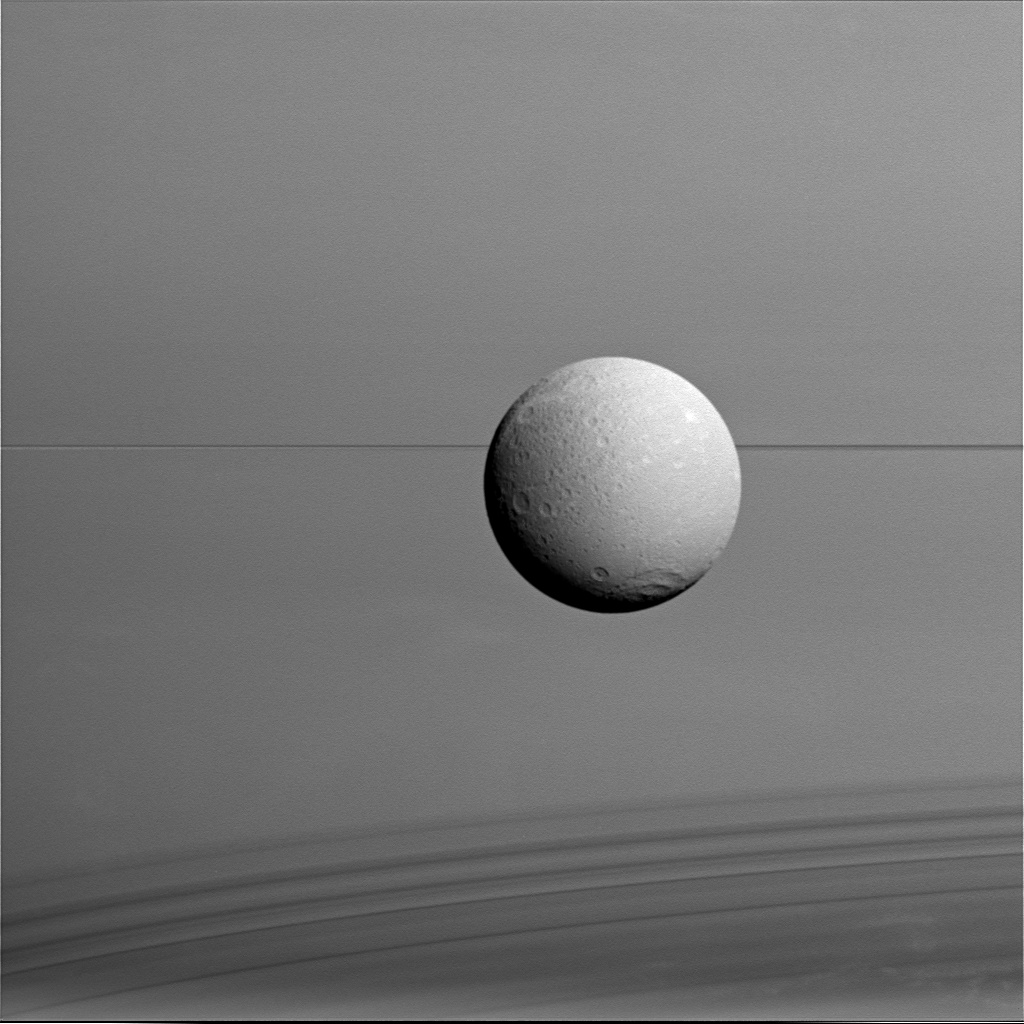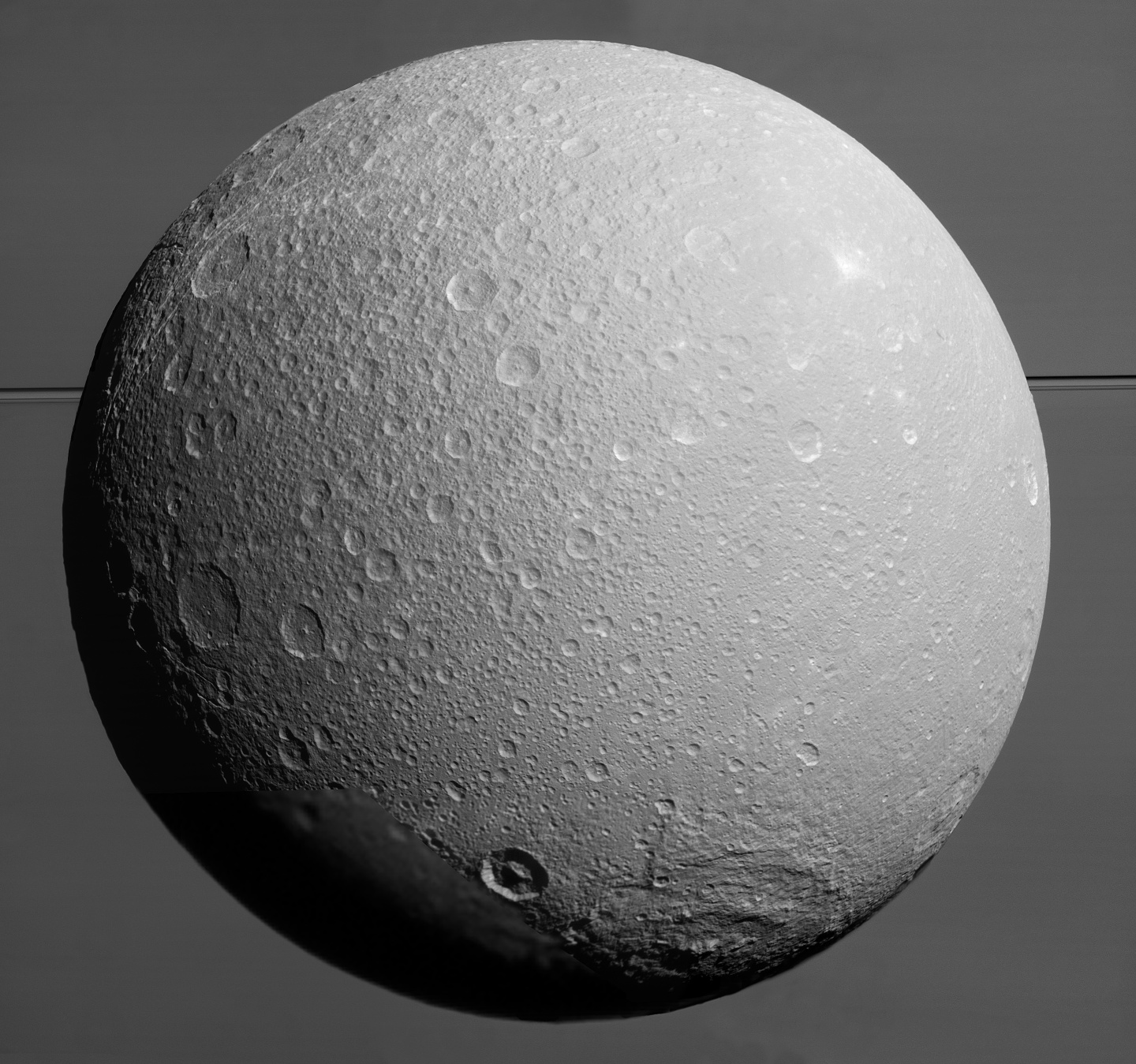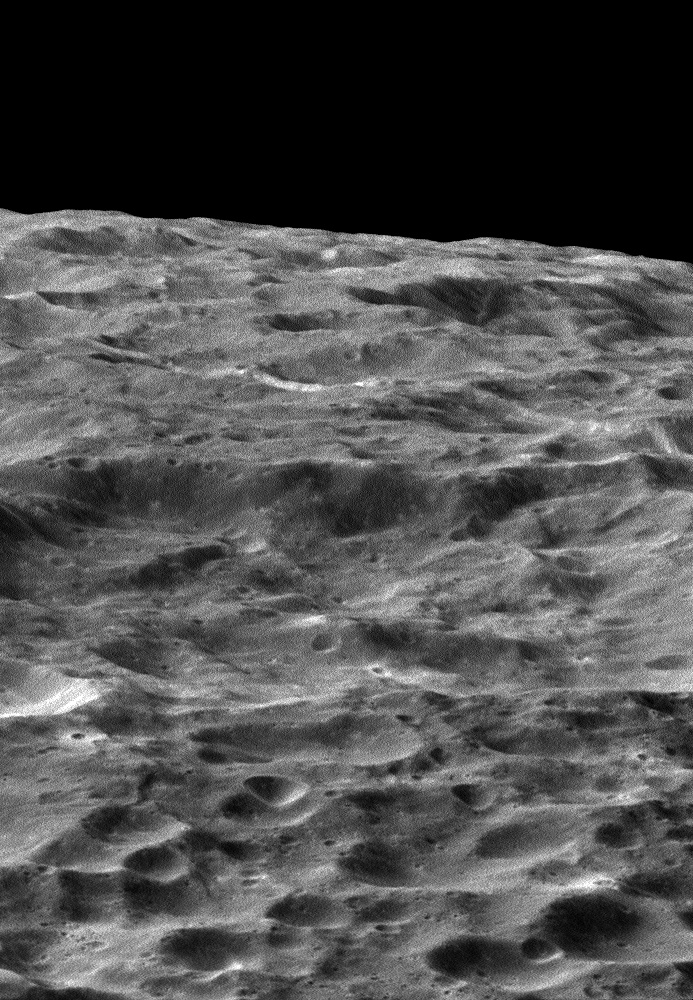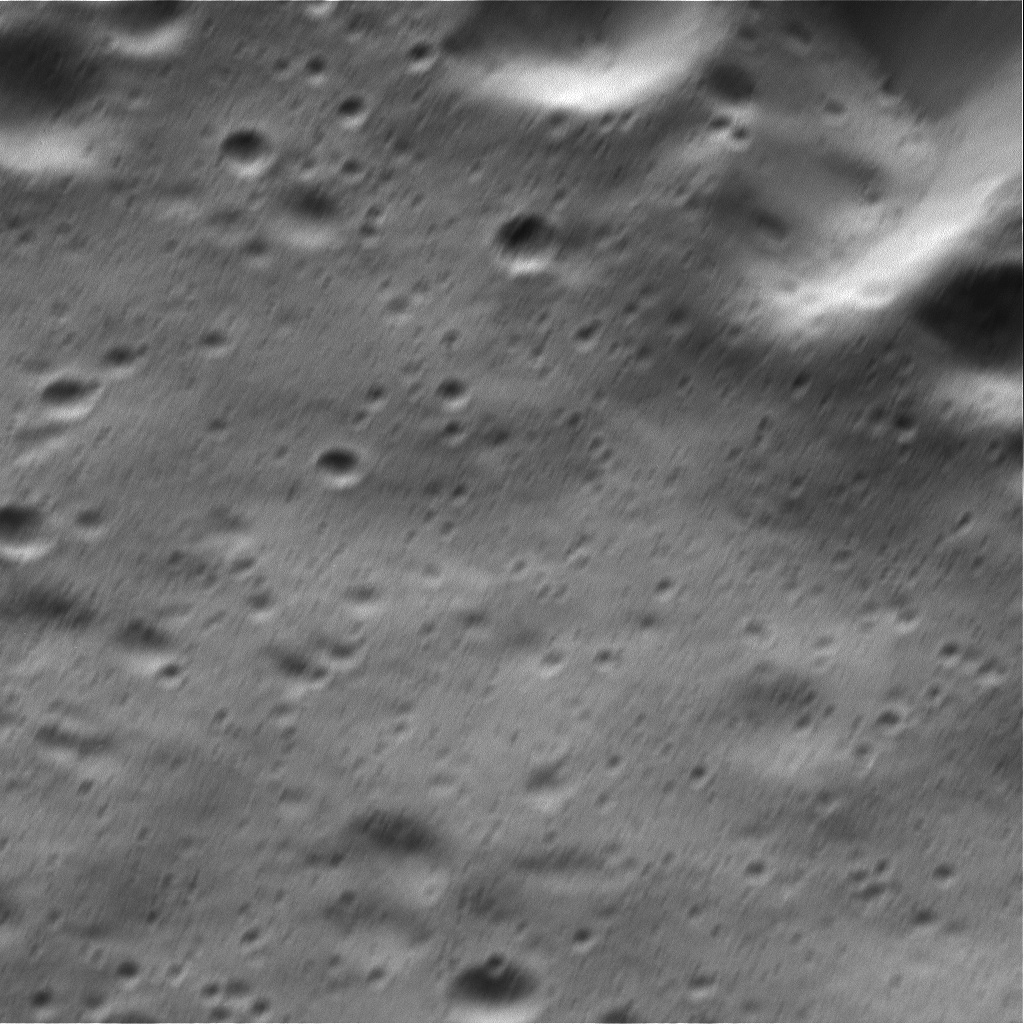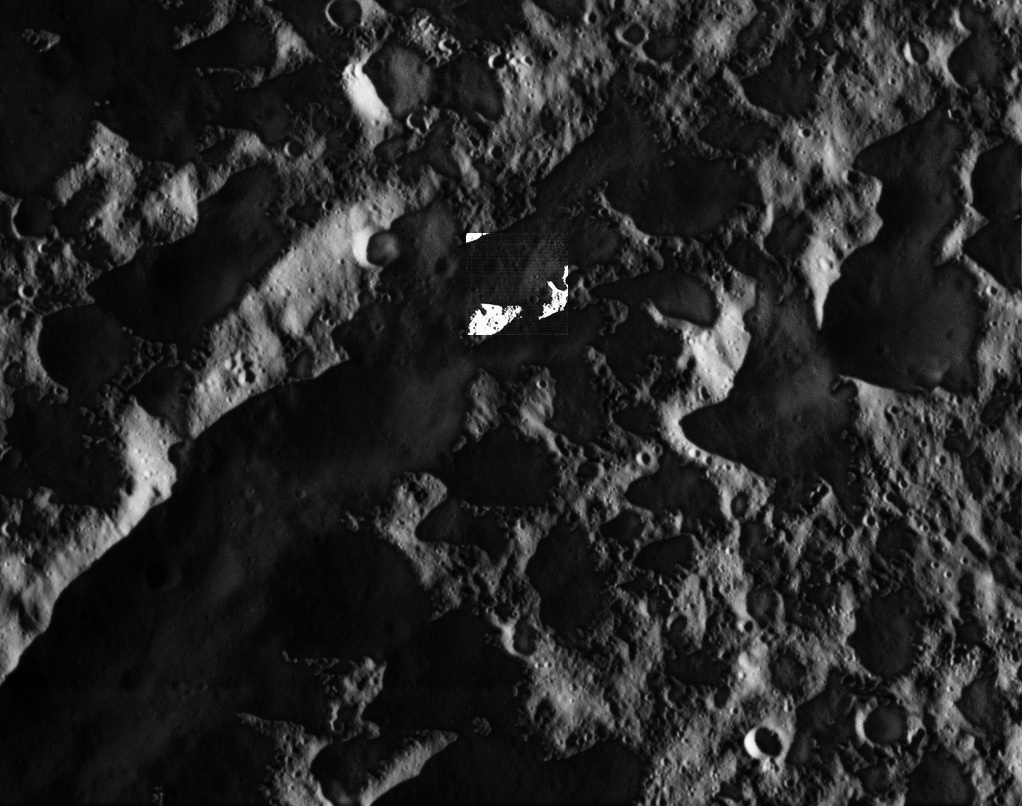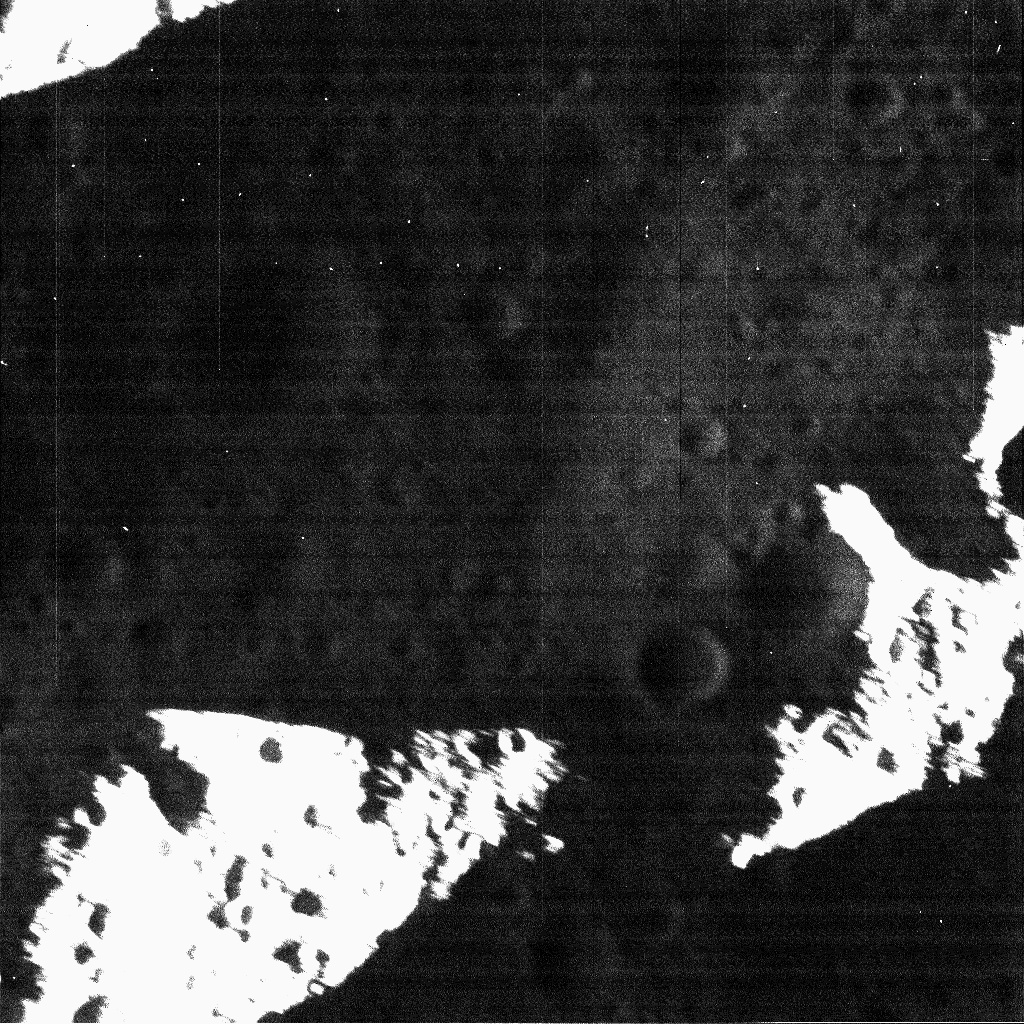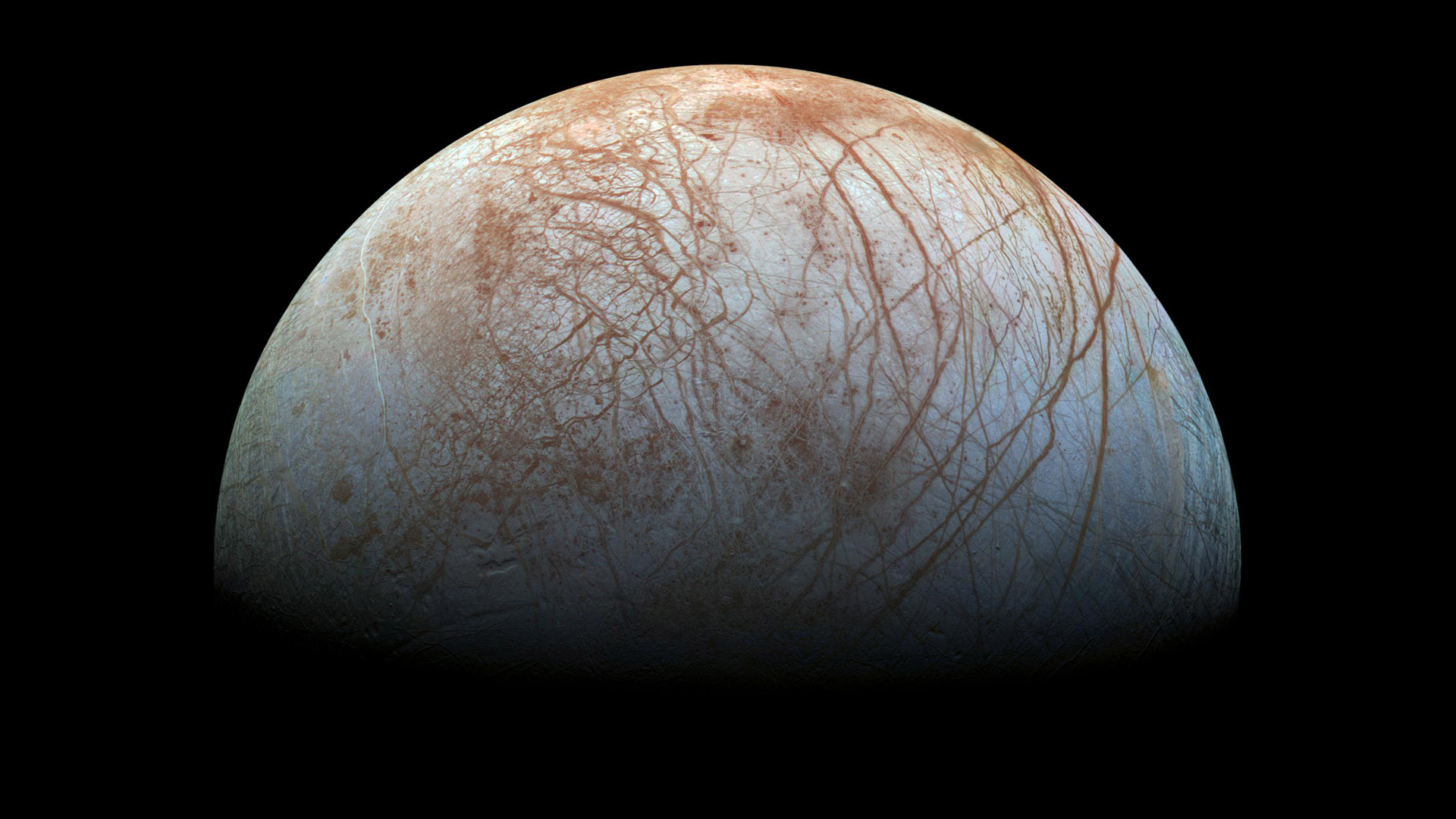Saturn's Moon Dione: Photos from Cassini's Final Close Flyby
Dione with Saturn's Rings and Shadows
Saturn's moon floats in front of the giant planet and its rings, as seen by Cassini spacecraft during its final close flyby of the icy satellite on Aug. 17, 2015. Cassini caught the view from a distance of approximately 45,000 miles (73,000 km) from Dione.
See more of the final flyby images in this gallery.
Dione's Craters and Saturn's Rings
Saturn's moon floats in front of the giant planet's rings, as seen by Cassini spacecraft during its final close flyby of the icy satellite on Aug. 17, 2015. Cassini caught the view from a distance of approximately 98,000 miles (158,000 km) from Dione.
Dione's Crescent Recedes
NASA's Cassini spacecraft obtained this composite image showing the rough, icy crescent of Saturn's moon Dione following the spacecraft's last close flyby of the satellite on Aug. 17, 2015. Cassini acquired the individual images of Dione used at distances varying from approximately 37,000 miles (59,000 kilometers) to 47,000 miles (75,000 kilometers).
Approaching Dione
NASA's Cassini spacecraft obtained this composite image of Saturn's icy moon Dione, with the giant planet and its rings in the background, just before the mission's final close flyby of the moon on August 17, 2015.
Dione's Impact-Battered Icescape
NASA's Cassini spacecraft gazes out upon a rolling, cratered landscape in this oblique view of Saturn's moon Dione.
Dione's Saturn-lit Surface
This view from NASA's Cassini spacecraft shows terrain on Saturn's moon Dione that is entirely lit by reflected light from Saturn, called Saturnshine.
Cassini's Closest Views of Dione
This view of Dione from NASA's Cassini spacecraft is one of the mission's highest-resolution views of the Saturnian moon's icy surface. Inset at left center shows a higher resolution view, one of the mission's highest-resolution views of the Saturnian moon's icy surface. [See the inset larger in the next image.]
Breaking space news, the latest updates on rocket launches, skywatching events and more!
Cassini's Closest Views of Dione Inset
This view of Dione from NASA's Cassini spacecraft is one of the mission's highest-resolution views of the Saturnian moon's icy surface. [See this image as an inset in the broader view in the previous image.]
Cassini's Closest Views of Dione
As Cassini soared above high northern latitudes on Saturn's moon Dione, the spacecraft looked down at a region near the day-night boundary. The inset just above center shows a higher resolution view, one of the mission's highest-resolution views of the Saturnian moon's icy surface. [See the inset larger in the next image.]
Cassini Narrow-Angle Camera View of DIone
Cassini spacecraft looked down at a region on Saturn's moon near the day-night boundary using its narrow-angle camera (NAC). This image was obtained near the time of the spacecraft's closest approach to the moon on Aug. 17, 2015. [See this image as a small inset in the previous image.]
Join our Space Forums to keep talking space on the latest missions, night sky and more! And if you have a news tip, correction or comment, let us know at: community@space.com.

Space.com is the premier source of space exploration, innovation and astronomy news, chronicling (and celebrating) humanity's ongoing expansion across the final frontier. Originally founded in 1999, Space.com is, and always has been, the passion of writers and editors who are space fans and also trained journalists. Our current news team consists of Editor-in-Chief Tariq Malik; Editor Hanneke Weitering, Senior Space Writer Mike Wall; Senior Writer Meghan Bartels; Senior Writer Chelsea Gohd, Senior Writer Tereza Pultarova and Staff Writer Alexander Cox, focusing on e-commerce. Senior Producer Steve Spaleta oversees our space videos, with Diana Whitcroft as our Social Media Editor.
